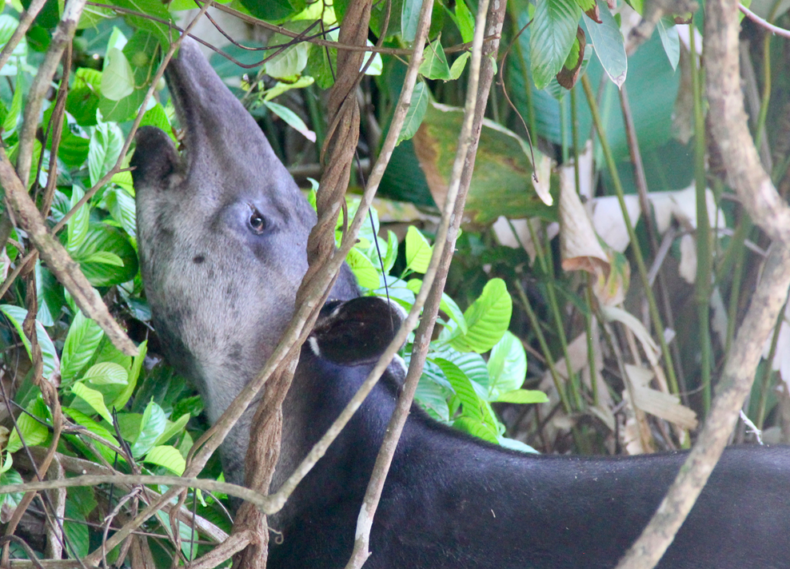
Earlier this month, Elise and I traveled to the Osa Peninsula, the appendage of tropical forest that juts off southwest Costa Rica into the Pacific Ocean. We chose that part of the country primarily to visit Corcovado National Park, a 164-square-mile protected area that the National Geographic Society once described, curiously, as the “most biologically intense place in the world.” (What does it mean for a place to be “biologically intense”? Do the spider monkeys all sound like Daniel Day Lewis?)
No roads lead to Corcovado’s heart, forcing tourists to approach by boat. We disembarked from our little landing craft onto a remote beach, cut through the jungle — led by our guide, Manuel, a serious steel-haired man with an encyclopedic knowledge of rainforest ecology — and emerged onto another beach. A small crowd of fellow hikers had gathered at the ecotone where the forest met the sand, and Manuel turned to us, unsmiling. “It is the tapir,” he said somberly.
A Baird’s tapir — the largest terrestrial creature in Central America, and the animal I’d hoped most desperately to see! We scurried over, though the tapir was in no rush to evade the growing knot of onlookers. He wandered along the edge of the rainforest, at once hulking and graceful in the way of all megafauna, his robust body perched atop improbably thin legs. He paused and craned his neck, reaching up with his proboscis to grasp and strip a cluster of leaves and fruit. The proboscis — which, Manuel informed us, furnished a built-in snorkel during river crossings — was shockingly flexible and dexterous, and the tapir used the organ to pluck food nearly as nimbly as I would’ve used my hands. Another few million years of evolution and it would be an elephant’s trunk.
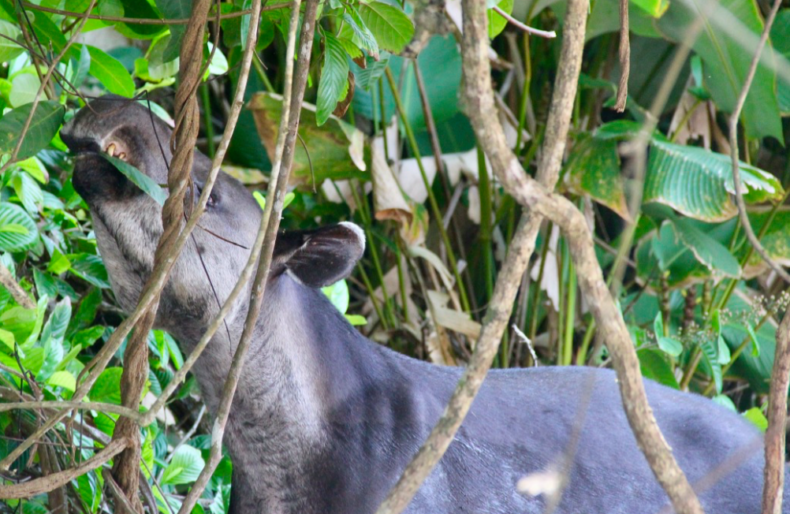
This was, in truth, not my first tapir. Back in 2019, I’d traveled to Brazil while researching my forthcoming book on road ecology (which, thanks for asking, now has a title, Crossings, and a release date and everything: September 12, 2023). One evening I was driving through a national park with the road ecologist Fernanda Abra when we came upon a young tapir — a lowland tapir, close cousin to the Baird’s — grazing the shoulder. The creature didn’t seem healthy: his ribs and scapula showed through his hide, a strand of drool dangled from his lip, and, when Abra got out of the car, he merely stared at her, huge eyes swiveling uneasily above the odd bulb of his snout. Not until she jogged toward him, clapping and hissing, did the tapir canter awkwardly into the brush. We didn’t doubt that he’d soon return to the verge, and would perhaps be struck. (Indeed, I’m saddened to report that I saw more than one roadkilled tapir in Brazil — collisions that probably didn’t end especially well for the drivers, either.)
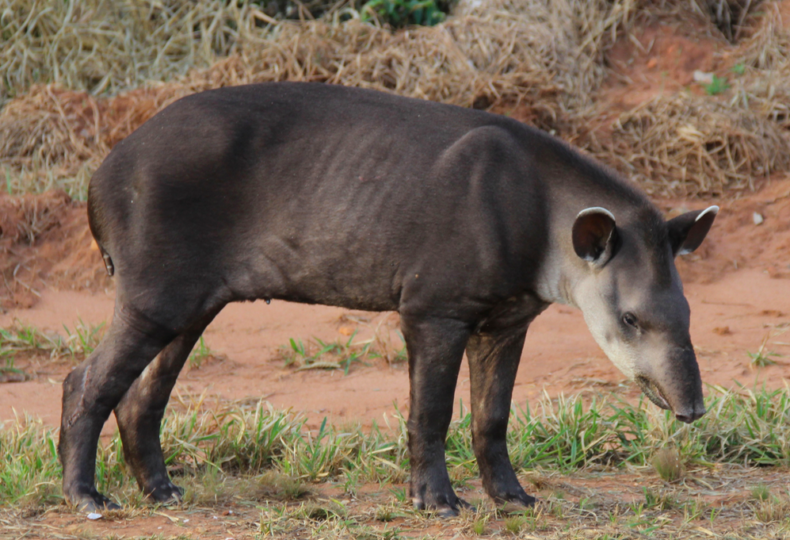
I didn’t come away from my encounter with that emaciated animal feeling particularly good: he was so sickly-looking, so deficient in vitality, that he seemed a poor representative of his whole majestic family. (Not that I blamed him, obviously; no doubt his poor condition had something to do with living in such close proximity to humanity.) I desperately wanted to see a tapir in all its glory, to understand what made these creatures so beloved and strange and special and, well, cool. I wanted to meet one on its own terms, in a salubrious environment, displaying behaviors that would be familiar to thousands of generations of Tapiridae. I wanted, in short, to see a tapir in a place like Corcovado.
And I did. The tapir, apparently sated, lumbered down to the beach, weaving through wrack and driftwood, and wandered away from us gawkers, in no evident hurry, secure in his primacy on this stretch of beach. I lingered to look at his singular tracks — tapirs, per Manuel, are the only animals with fourteen toes, four on their front feet and three on their hind — imprinted in the wet sand.
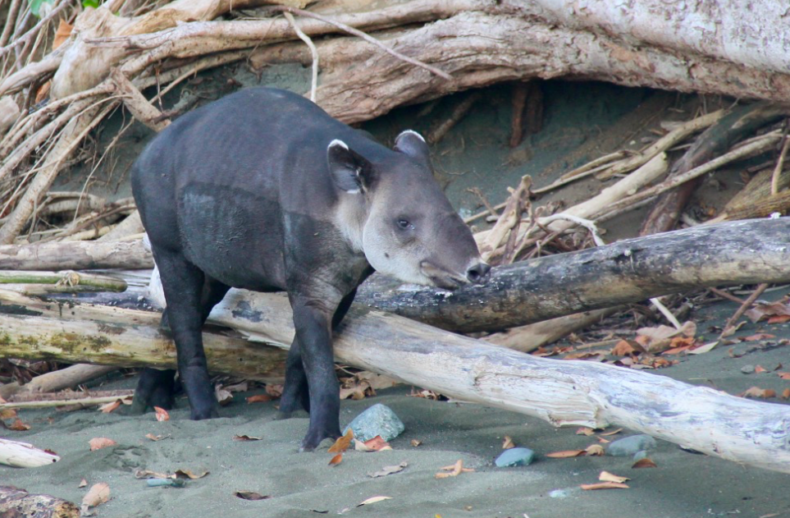
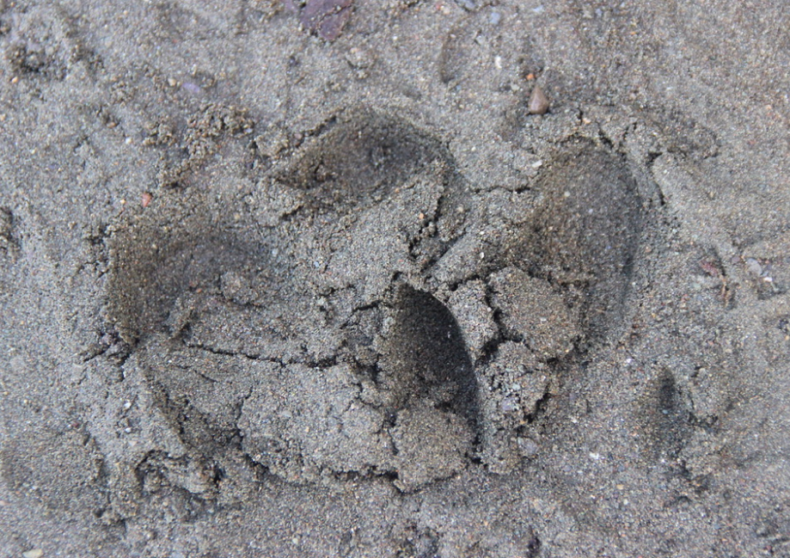
One thought on “Two Tapirs”
Comments are closed.